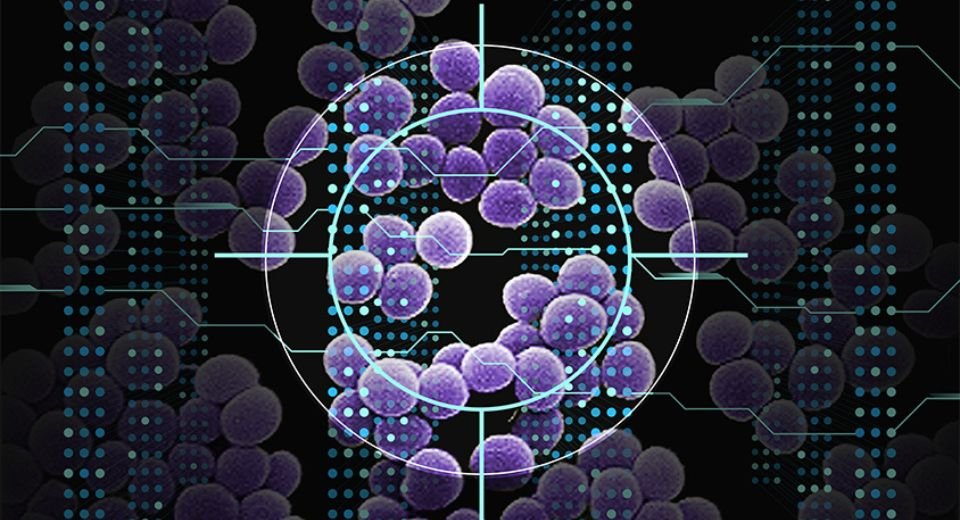HQ Team
January 2, 2024: After screening 12 million commercially available compounds using AI, researchers at the Massachusetts Institute of Technology have discovered a drug candidate to terminate a potentially fatal skin bacteria.
They bought 280 compounds and tested them against methicillin-resistant staphylococcus aureus (MRSA) grown in a laboratory dish.
They honed in on two compounds.
“In tests in two mouse models, one of MRSA skin infection and one of MRSA systemic infection, each of those compounds reduced the MRSA population by a factor of 10,” the authors wrote in a statement.
“Experiments revealed that the compounds appear to kill bacteria by disrupting their ability to maintain an electrochemical gradient across their cell membranes.”
MRSA and other staph skin infections often appear as a bump or infected area on the skin. It may appear to be red, swollen or painful, warm to the touch, full of pus or other drainage.
Sepsis, pneumonia
It often causes skin infections or pneumonia. Severe cases can lead to sepsis, a potentially fatal bloodstream infection.
It is spread by direct contact, by touching surfaces or items contaminated with the bacteria, or by sharing personal items such as towels or razors that have touched infected skin.
Skin infections can occur anywhere on the body. Some common sites are the legs, buttocks, groin, and back of the neck. It may be accompanied by fever, according to Centers for Disease Control and Prevention.
The researchers used deep learning techniques to discover the compounds that showed “very low toxicity against human cells, making them particularly good drug candidates.”
During the discovery process, the researchers were also able to learn the way the deep-learning model deployed to make its antibiotic potency predictions.
“This knowledge could help researchers to design additional drugs that might work even better than the ones identified by the model,” according to a statement from the institute.
Breakthrough
James Collins, Termeer Professor of Medical Engineering and Science at MIT’s Institute for Medical Engineering and Science said: “The insight here was that we could see what was being learned by the models to make their predictions that certain molecules would make for good antibiotics.
“Our work provides a time-efficient, resource-efficient, and mechanistically insightful framework, from a chemical-structure standpoint, in ways that we haven’t had to date.”
MRSA infects more than 80,000 people in the US every year and often causes skin infections or pneumonia. Severe cases can lead to sepsis, a potentially fatal bloodstream infection.
Globally the proportion of bloodstream infections due to MRSA rose from 21% in 2016 to 35% in 2020, according to the WHO.
The MIT research is part of the Antibiotics-AI Project which aims to discover new classes of antibiotics against seven types of deadly bacteria, over seven years.
Deep learning model
First, the researchers trained a deep-learning model using substantially expanded datasets. They generated this training data by testing about 39,000 compounds for antibiotic activity against MRSA, and then fed this data, plus information on the chemical structures of the compounds, into the model.
These models then sift through millions of other compounds, generating predictions of which ones may have strong antimicrobial activity.
“These models consist of very large numbers of calculations that mimic neural connections, and no one knows what’s going on underneath the hood,” said Felix Wong, a postdoc at the Institute for Medical Engineering and Sciences MES and the Broad Institute of MIT and Harvard.
“You can represent basically any molecule as a chemical structure, and also you tell the model if that chemical structure is antibacterial or not,” Wong said.
“The model is trained on many examples like this. If you then give it any new molecule, a new arrangement of atoms and bonds, it can tell you a probability that that compound is predicted to be antibacterial.”
To find out how the model was making its predictions, the researchers adapted an algorithm known as Monte Carlo tree search.
“This search algorithm allows the model to generate an estimate of each molecule’s antimicrobial activity and predicts which substructures of the molecule were likely to account for that activity,” according to the statement.

1 Comment